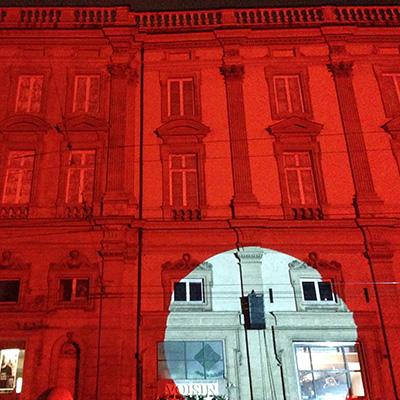leila.signorelli_828
ABILITÀ TRADIZIONALI ED EMERGENTI
La salvaguardia della cultura richiede conoscenze sempre più trasversali per affrontare le sfide complesse poste dal patrimonio culturale. Competenze consolidate di documentazione, diagnostica e restauro, si associano ad abilità di disseminazione, networking e coinvolgimento delle comunità. Il testo presenta alcuni risultati di ricerca del progetto Horizon 2020 4CH - Competence Centre for the Conservation of Cultural Heritage, volto alla definizione del quadro metodologico e organizzativo di un Centro di Competenza (CC) che, a livello europeo e nazionale, fornirà supporto, consulenza e servizi in questo campo. L’identificazione di competenze e abilità, tradizionali ed emergenti, è stata svolta a partire dalla lettura critica di documenti di indirizzo, buone pratiche e programmi di formazione, con l’obiettivo di definire attraverso quali attività il futuro CC potrà migliorarne lo sviluppo.
TRADITIONAL AND EMERGING SKILLS
The safeguarding of culture requires increasingly transversal knowledge to face the complex challenges posed by cultural heritage. Consolidated competences in documentation, diagnostic and restoration are combined with dissemination, networking and community involvement skills. The paper presents some research results of the Horizon 2020 4CH - Competence Centre for the Conservation of Cultural Heritage project, aimed at the definition of the methodological and organisational framework of a Competence Centre (CC) which will provide support, consultancy and services in this field at European and national level. The identification of traditional and emerging skills has been carried out starting from the critical reading of policy documents, good practices and training programmes, with the aim of defining through which activities the future CC will be able to enhance their development.
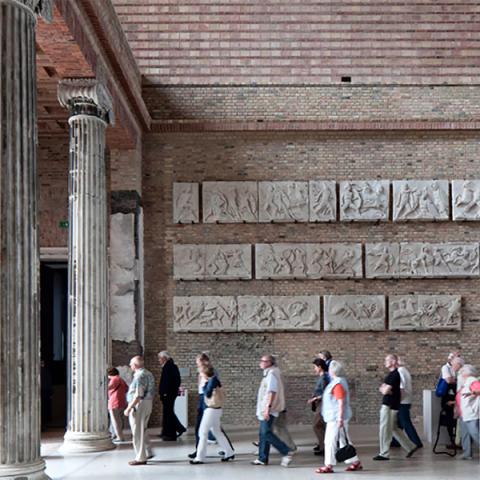
EUROPEAN TRAINING CURRICULUM FOR RESTORATION WORKERS (RE-VET PROJECT)
Gli interventi di restauro hanno il fine di preservare il patrimonio storico-culturale e architettonico per poterlo tramandare alle generazioni future. I lavori di restauro architettonico sono normati da specifiche regole e sono guidati da professionisti. Ciononostante, nel panorama europeo, tra gli operai edili impiegati nel campo del restauro architettonico scarseggiano generalmente conoscenze sufficienti per intervenire in piena coscienza sui beni culturali: questa mancanza di cultura diffusa può costituire una minaccia per la conservazione del patrimonio. L’articolo presenta il progetto europeo RE-VET (European Training Curriculum for Restoration Workers), un Erasmus plus che è stato avviato nel 2020 ed è pensato per la fascia di lavoratori EQF4 che operano nei canteri di restauro architettonico in Europa. Il fine, in armonia con gli obiettivi più generali dei programmi Erasmus Plus, è quello di intervenire sulla formazione per colmare le lacune esistenti, per migliorare la qualità degli interventi di restauro sul patrimonio architettonico, contribuendo così alla conservazione preventiva del patrimonio storico-culturale e architettonico in Europa.
EUROPEAN TRAINING CURRICULUM FOR RESTORATION WORKERS (RE-VET PROJECT)
Conservation projects aim to preserve the authentic cultural properties of architectural heritage in order to hand these values down to future generations. Restoration works on Cultural Heritage require special professional skills and trusting incompetent and inexperienced people is a threat which could affect its conservation. The architectural restoration works are regarded as a part of the construction industry according to specific regulations and they are led by professionals. However, workers involved in the building companies generally lack skills and knowledge on how to handle historic buildings. This paper presents a European Erasmus plus project, started in 2020 and designed for craftspeople who implement works dealing with architectural heritage: RE-VET project (European Training Curriculum for Restoration Workers). It aims at contributing to the skills of these workers in order to increase the quality in restoration works of architectural heritage, thus contributing to the preservation of cultural heritage in Europe using a bottom-up approach.
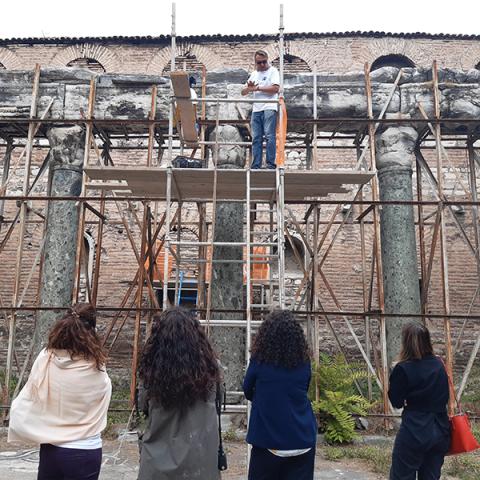
DA TRAIN STATION A BIKE HOTEL
La ferrovia che univa la città di Mantova a Peschiera del Garda fa parte dell’ampia casistica del patrimonio ferroviario in disuso. Inaugurata nel 1934 e dismessa progressivamente a partire dal 1966, la sua presenza si rintraccia nel paesaggio grazie al tratto della pista ciclabile europea EV7 che la ricalca quasi interamente, oltre che per le architetture, ormai meno leggibili che afferivano alla linea. La ex Stazione di Salionze è un caso esemplare di riuso del monumento insieme al recupero del percorso storico, attuato grazie al bando di valorizzazione promosso dall’Agenzia del Demanio “Valore Paese”, che ha offerto l’occasione di tutelare questo patrimonio innescando anche un processo virtuoso di riappropriazione da parte della comunità.
FROM TRAIN STATION TO BIKE HOTEL
The railway that once connected the city of Mantua to Peschiera del Garda is part of the wide range of disused railway heritage. Inaugurated in 1934 and progressively disused since 1966, its presence can be detected in the landscape thanks to the section of the EV7 eurpean cycle path that almost entirely overlaps it, as well as the now less decipherable architecture that once belonged to the line. The former Salionze train station is an excellent case of reuse of the monument together with the recovery of the historic route, implemented thanks to the redevelopment tender promoted by the Agenzia del Demanio "Valore Paese", which offered the opportunity to safeguard this heritage, also triggering a virtuous process of heritage community
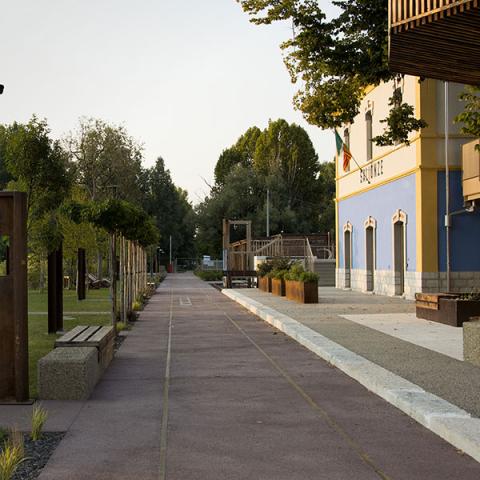
OGR – Officine Grandi Riparazioni di Torino
Le Officine Grandi Riparazioni (OGR) di Torino sono un esempio virtuoso di riuso e valorizzazione del patrimonio industriale innescato a partire dalla sperimentazione di nuovi processi di sviluppo economico in cui il ruolo e la funzione della cultura e delle attività creative diventano sempre più importanti e decisivi nella catena del valore delle produzioni locali. Il contributo ripercorre le fasi, gli attori e i significati di questo processo, focalizzandosi sul meccanismo culturale di ‘rimessa in funzione’ delle OGR da officine di riparazione dei treni a fucina di creatività e innovazione.
The OGR – Officine Grandi Riparazione in Turin
The case of Officine Grandi Riparazioni (OGR) in Turin is a virtuous example of reuse and enhancement of industrial heritage triggered by the experimentation of new processes of economic development in which the role and function of culture and creative activities become increasingly crucial in the value chain of local productions. This paper retraces phases, players and meanings of this process, focusing on the cultural mechanism of ‘restarting’ OGR from a train repair factory to a creativity and innovation hotbed.
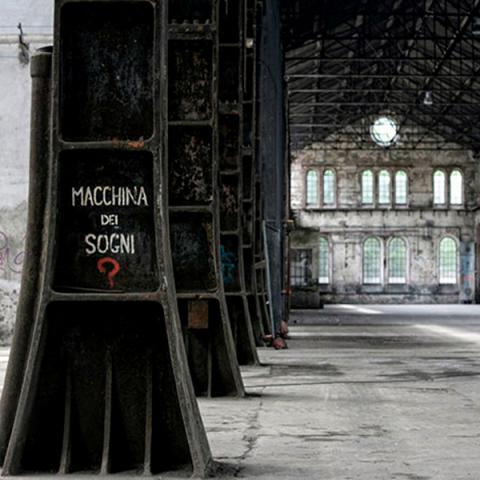
Le cisterne dell’acqua di Medellín
UVA - Unidades de Vida Articulada è un programma di riqualificazione nato a Medellín (Colombia). Questo prevede il recupero e la trasformazione di un sistema di decine di cisterne, rimaste a volte orfane della funzione originaria ed isolate come ruderi della modernità, in un sistema di parchi urbani ad uso collettivo. Il programma, paradigma delle nuove politiche di sviluppo urbano, ha previsto il coinvolgimento di diversi stakeholders e la realizzazione di differenti soluzioni progettuali, di cui alcune virtuosamente si originano dall’integrazione tra storia e prospettive delle cisterne novecentesche.
The cisterns of Medellìn
UVA - Unidades de Vida Articulada is a regeneration program born in Medellín (Colombia). This involves the transformation of a system of dozens of cisterns becoming ruins of modernity, into a system of urban and architectural spaces aiming at a collective inclusive use. The program, paradigm for new urban development policies, involved various stakeholders and allowed the creation of different design solutions, some of which are virtuously based on the integration of history and the new life of 'ancient' cisterns.
LIGHT DESIGN PER CONOSCERE E VALORIZZARE LA CITTÀ STORICA
Il Light Design si può considerare un ramo dell’Industria Culturale Creativa, settore per il quale la cultura è una vera e propria infrastruttura economica: attraverso il caso studio di Lione, partner del progetto ROCK, l'indagine si concentra sul rapporto tra l'uso di tecnologie innovative e il patrimonio culturale, di come l'impiego del Light Design in tutte le sue forme (illuminazione, proiezioni, video-mapping) favorisca la valorizzazione e la conoscenza della città storica attraverso un'inedita interpretazione, capace di ampliarne i significati.
Light Design to experience and enhance the historic city
